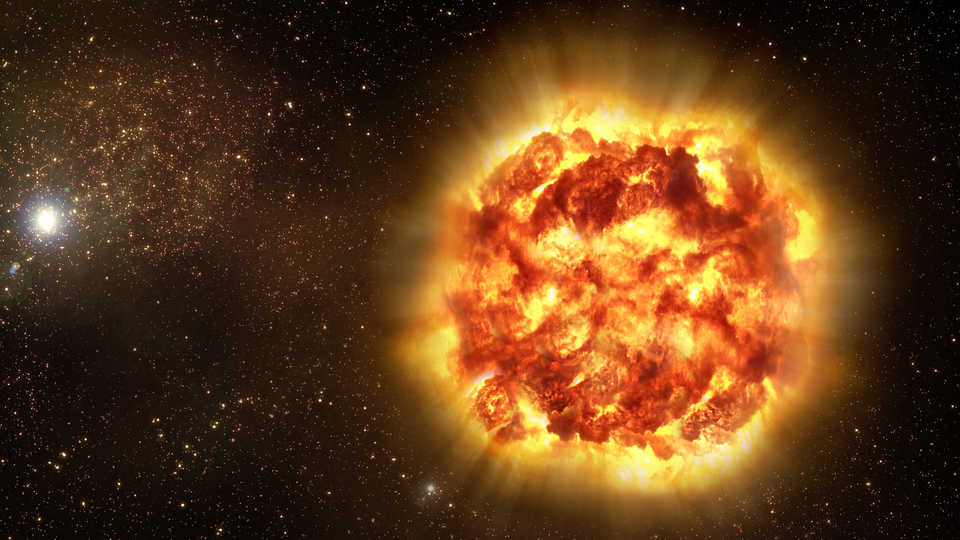Mapping the Heavens, Priyamvada Natarajan, Yale University
Monday, March 6th at 7:30 pm

Astronomers have known for a long time that when stars much more massive than our sun die they go out with a bang! (So to speak.) A red supergiant ends its life in a gigantic explosion called a type II supernova that releases the outer layers of the dying star, creating heavy elements and emitting extremely high energy radiation. While we know these explosions happen, it’s extremely rare to observe one in action. Since the event itself only takes a few hours, we’re usually only able to observe the remnants of these explosions… But that is now changing! A paper released this week in Nature Physics describes observations of the youngest supernova ever witnessed.
Pre-supernova evolution of a star is, so far, very poorly understood. Theoretical models and studies of the final years and days of a supergiant suggest that stars would lose mass rapidly through strong stellar winds, heightened variability, and eruptive periods. Unfortunately, most of these studies have stayed in the theoretical realm without observations, which has made it very difficult to predict when a supernova is going to occur.
A massive star has a lifetime of millions to tens of millions of years, but only spends about 10 percent of its lifetime in this red supergiant phase. In addition to this last phase being relatively short, the timescales for these highly variable pre-explosion periods can be on the order of years or even days, extremely short for astronomical phenomena! This short timescale makes pre-supernova observations very rare, so rare that scientists on this study say “it is very likely that not even a single star that is within one year of explosion currently exists in our galaxy.” So, unless you’re really lucky and looking in exactly the right place at the right time, you’re unlikely to spot a red supergiant in its final death throws.
Luckily for us, these astronomers were indeed looking at the right place at just the right time. Using the Palomar Transient Factory survey as well as the Keck-I telescope, observations were made of a red supergiant a mere three hours after it exploded. This rare opportunity allowed the astronomers to study the material surrounding the dying star. Their observations showed that the pre-supernova star was surrounded by a shell of gas, that stretched up to about 21 light hour—nearly 23 billion kilometers (or about 14 billion miles, if you prefer), a distance light traverses in merely 21 hours—from the surface of the supergiant. This shell was emitted in the last year of the supergiant’s lifespan. One of the main reasons an observation like this has eluded astronomers is that the shell of gas doesn’t stick around long. Only a few days after this initial observation, emissions from the shell dissipated and were gone.
This isn’t the first time an observation of this nature has been made. However, it is the first time an early observation has been made for a very typical type II supernova. Other recent observations have studied rare supernovae that represent only a small portion of the different supernovae that exist. The supernova from this study is similar to about 50% of those from other massive stars. And it is the first time a spectra was observed from a star that died only a few hours prior to the discovery.
Hopefully this is just the beginning of observations of this kind. The more we understand behavior of these late-in-life red supergiants, the easier it will be to predict when a supernova is going to occur. Once we can predict these events, finding and studying them will become substantially easier.
Image: ESO
Mapping the Heavens, Priyamvada Natarajan, Yale University
Monday, March 6th at 7:30 pm